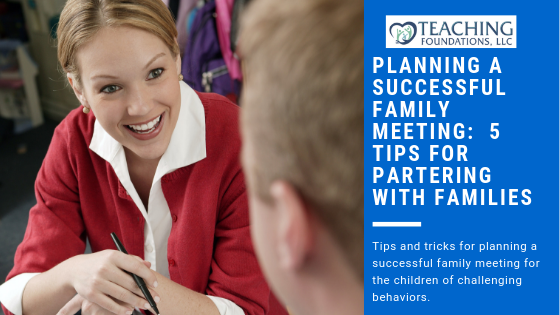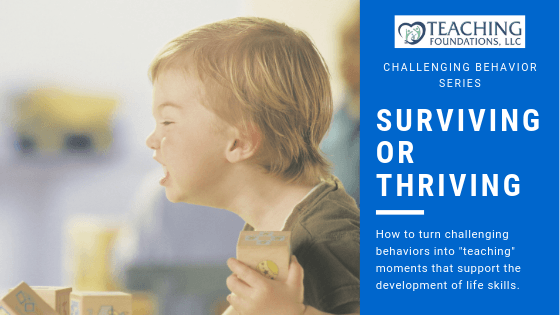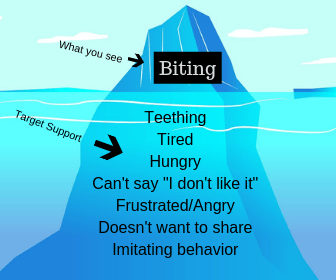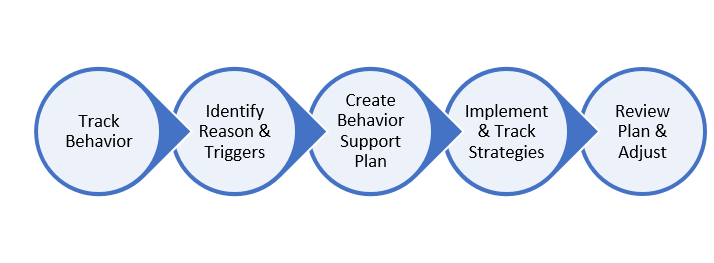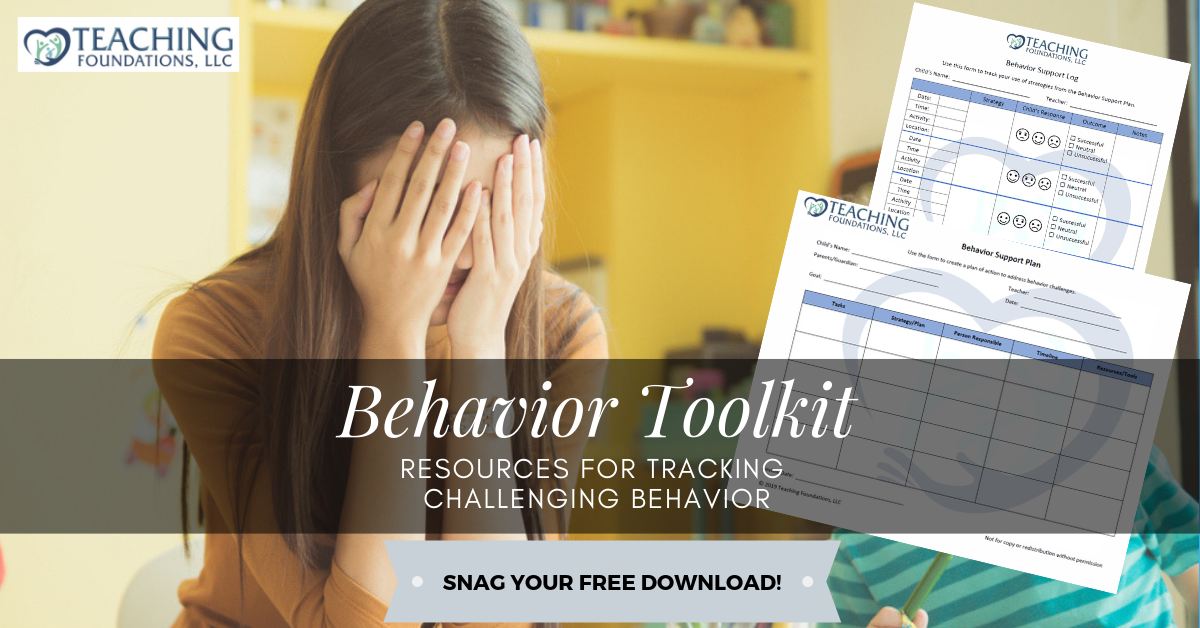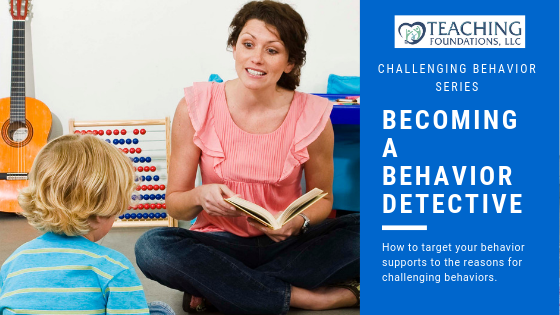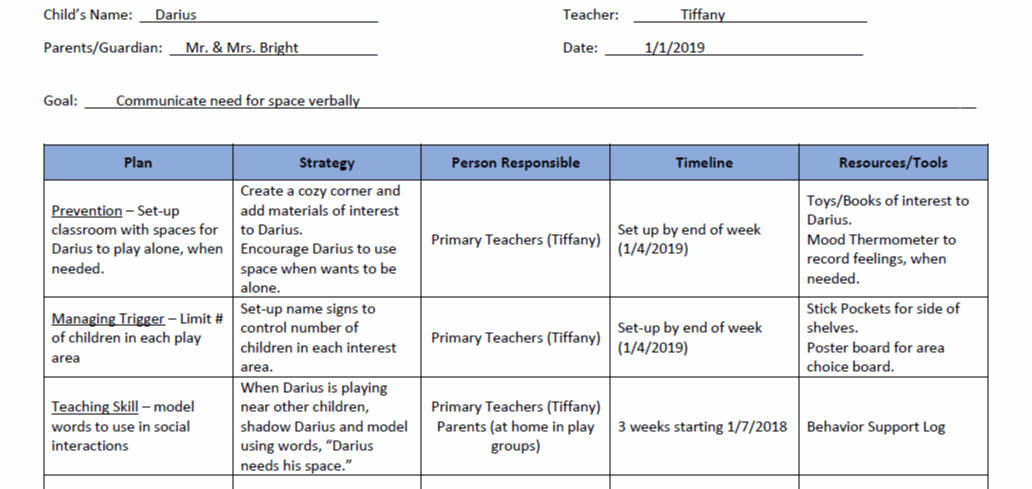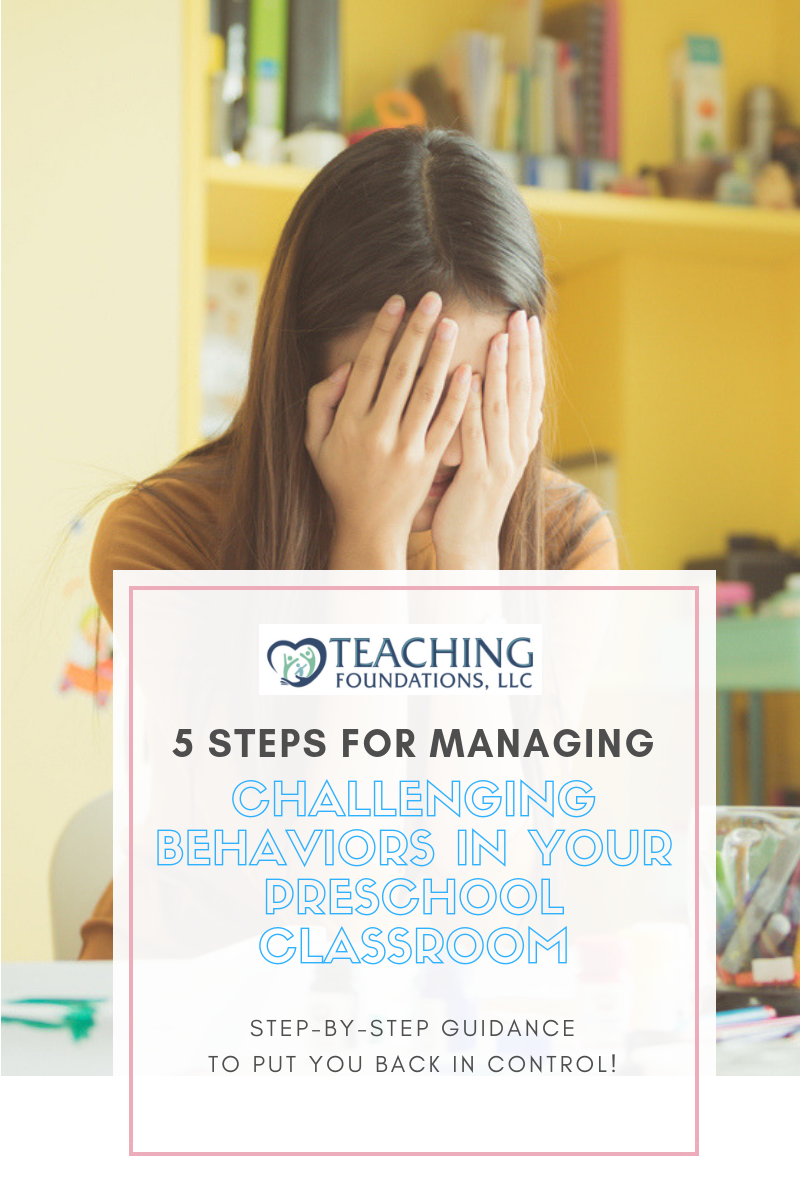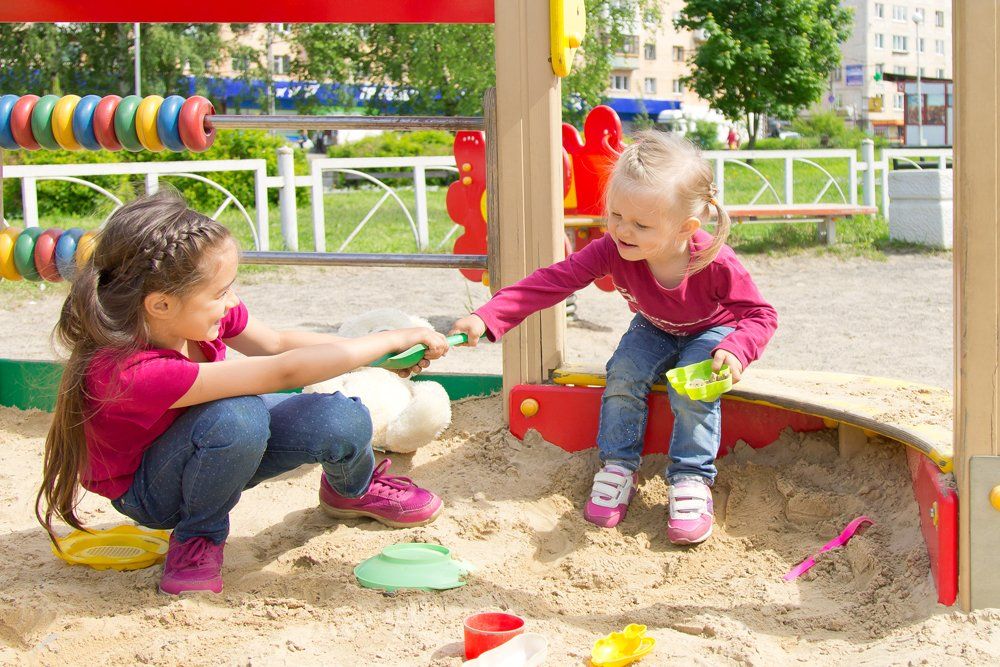5-Step Process for Managing Challenging Behaviors

It’s the middle of the year and you have that one child who is constantly hitting, throwing toys, and turning over furniture. You have tried all your traditional positive guidance strategies, but with this child, nothing seems to work. You are starting to be concerned for the safety of the other children in your room and are considering whether this child needs to be removed from your classroom.
While challenging behaviors are common (everyone seems to
have them), knowing what to do when you are faced with these behaviors is
not. In fact, there are few, if any,
courses, tutorials, or resources that specifically tell you what to do. In this article, I am going to break down a 5-step process for managing challenging behaviors that will help you shift your
focus from “controlling the behavior” to “teaching” the necessary social-emotional
skills the child needs to successfully participate in your classroom routines.
What is Behavior?
Before I introduce the 5-step process, I want to take a moment to discuss what “behavior” is. Behavior is like an “iceberg”. What you see is only the “tip”. The hitting, throwing toys, and turning over furniture are actually a symptom of something deeper. The challenge is to find out what is underneath the behavior that you are missing (see image below), as this is the reason for the behaviors you are seeing. The key to addressing challenging behaviors is to focus your strategies on the reason for the behavior - the bottom of the iceberg. By doing this, you are able to change or reduce the behaviors that you see - the tip of the iceberg.
The 5 steps that help you target the reason for the
challenging behavior are:
- Observe & track
behavior,
- Identify function of behavior (reason)
- Create Behavior Support Plan
- Implement plan & track strategies
- Review plan and adjust, when needed.
Let’s look at the 5 steps in action with the following scenario:
Darius is a child who is three-years-old and prefers to play alone. During choice time, he will hit and scratch children who are playing in the same area with him. When teachers try to talk with him, he yells at them and hits them, saying, “I don’t like you!” Darius has at least 3 outbursts each day and it takes 20 – 30 minutes for Darius to calm down. The teachers are frustrated and want support from management and the parents to get Darius’s behavior under control.
The tip of Darius’s iceberg is hitting, scratching, and yelling. These are the observable behaviors the teacher sees. The challenge is to find out the reason for these behaviors - the bottom of the iceberg. The teacher uses the 5 steps as follows:
Step 1: Observe & Track Behavior
It is important to track behavior in order to obtain an objective factual record of when, with whom, and how behaviors are occurring. A simple Antecedent-Behavior-Consequence (ABC) chart is used to log each incident when Darius displays hitting, scratching, and yelling. The teacher documents what happens before the incident - the antecedent, what happens during the incident - the behavior, and what happens after the incident - the consequence. An entry in the ABC chart would read:
As the teacher continues to document the incidents of Darius’s behavior over a course of 2-3 weeks, a pattern in Darius’s behavior begins to emerge.
Step 2: Identify Reason for Behavior (Function)
The reason for behaviors is the base of the iceberg that is frequently not “seen” by teachers. However, the reasons for behavior become visible in the patterns of the behavior when teachers track incidents.
The consequence - or reward - tells you what the child is getting out of the behavior. For example, the “reward” for Darius’s behavior was children left the area or stopped playing with his toys when he hit or scratched them. Additionally, teachers stopped talking to Darius about what happened when he yelled at or hit them. These behaviors became the way Darius got everyone in his environment to leave him alone. Triggers for Darius was anytime another child entered his space or played with toys in his area.
Any triggers or rewards discovered should be shared with families to see if parents notice similar trends at home. Click here to learn strategies for building strong partnerships with families. Parents may not see the behaviors at home, if the triggers for the behavior are not present in the home environment. For example, Darius is an only child who plays well with his toys at home. There are not any children entering his space. Thus, the need for hitting and scratching does not exist at home. This information is important to consider because we know that Darius does not have the opportunity to practice sharing at home. Thus, this is a skill he will have to learn at school.
Once the teacher identifies possible triggers and rewards, the next step is to identify any missing social skills related to the reason for the behavior. For Darius, a missing social skill was sharing toys and using words to communicate his need for space. These missing skills should be included in the behavior support plan created for Darius.
Step 3: Create Behavior Support Plan
Once you know the triggers, the next step is to create a behavior support plan to proactively address the triggers before the challenging behavior is needed. A support plan is a plan of action with specific strategies, tools, and responsibilities for the teaching team, parents, and administration. The support plan should be focused on teaching the child the missing social skill (calming down when angry, sharing, using words to communicate needs, etc.) or adapting the environment, if the needed social skills are not age appropriate. The sections of the support plan include the goal, the strategies, the person responsible, time frame for implementing, and resources or tools needed. The support plan should also list a date to review the plan.
For Darius, a goal for him was to learn to communicate his need for space to his peers using words. His behavior support plan would look like this:
This plan is shared with the families so that they can support Darius learning the skills at home. In this example, the parents are encouraged to enroll Darius in playgroups or take him to social play spaces, such as the park, where they will encourage the use of the same “words” at home. Parents are more likely to support the plan if they are given specific strategies to try at home. Remember, parents often do not have the training and experience that teachers have and may rely on the teacher for guidance with managing the behavior and learning new skills.
A support plan should include strategies for prevention (managing triggers), teaching (learning a new skill), minimizing the reward (extinction), and rewards for desired behavior (reinforcement). There should also be a plan for what to do when the behavior becomes unsafe (move to cozy area, take balloon breathes to calm, etc.). Remember, these strategies need to be taught to the child when they are calm. Social stories are a great way to do this.
Step 4: Implement Support Plan & Track Strategies
Now that a plan of action is in place, it is necessary to implement the plan. Remember, change is a slow process and, if the behavior has been reinforced for months, it may take a few months for the child to learn the new skill and “see” its benefit. Therefore, the plan needs to be consistently implemented for it to be successful.
The use of strategies should be documented and tracked on a support tracker. The support tracker is used to objectively assess whether a strategy/tool is working over time. When reviewing the support tracker, you are looking for times when strategies are working, the child’s response, teacher’s role, and the environment. Darius’s support tracker may look like this:
Step 5: Review Plan & Make Adjustments, as needed
The last step in the process is to review the behavior support plan and make adjustments to strategies, as needed. The review date should be scheduled when the plan is put in place. Teachers, parents, and administrators should all review the support tracker and identify strategies that are working well and strategies that need to be adjusted. Any adjustments need to be documented on an updated behavior support plan and be implemented for at least 3 weeks to determine effectiveness.
By following this 5-step process, you will produce all
the documentation needed of what you did to try to support and assist the
child. When you run out of strategies,
the next step may be to refer the child for a behavioral evaluation with an
early intervention specialist.
Sign up for our newsletter to receive all the articles in our challenging behaviors series in your inbox!
I look forward to reading your comments about the process below. Have you tried any of these steps? What are the challenges you foresee or have faced? How might following this process help you better manage the behaviors in your room?
Do you have a process for addressing challenging behaviors in your early childhood program? Our live, instructor-led virtual training, Breaking the Behavior Code: Discovering the "Why" Behind Challenging Behaviors will teach you our 5-step process. Sessions running in September and October.

